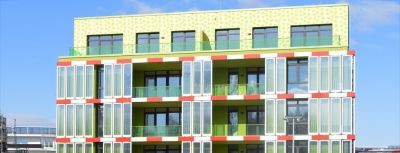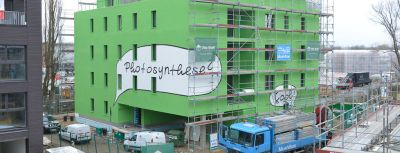Share




As demands for more sustainability in our lifestyles increases, so do the innovations that cater to those demands. One of the most striking advances in the green sciences is the use of algae as a source of energy, and in the most innovative of ways.
Scientists and architects are working on creating sustainable buildings that can generate their own energy. There are actual prototypes being developed in Germany. In the International Building Exhibition in Hamburg, developers are transforming their ideas from the realm of designs and outlines on paper into an actual reality.
They are building the first ever apartment block with windows that contain algae within them, a sort of green skin for the building's exterior. This exterior has several functions, to generate energy which is harnessed within the building and used as an alternative to non-sustainable fuels, create shade and keep the interior cool.

The building is provided with an exterior that has microalgae growing within it, these tiny plants are allowed to increase, and are supplied with liquid nutrients and carbon dioxide. By being exposed to sunlight the algae grows, and its growth supplies the building with its energy.
On the website International Building Exhibition, the profile of the BIQ building provides an outline of the concept:
"The algae flourish and multiply in a regular cycle until they can be harvested. They are then separated from the rest of the algae and transferred as a thick pulp to the technical room of the BIQ. The little plants are then fermented in an external biogas plant, so that they can be used again to generate biogas. Algae are particularly well suited for this, as they produce up to five times as much biomass per hectare as terrestrial plants and contain many oils that can be used for energy.
The BIQ has a holistic energy concept, it draws all of the energy needed to generate electricity and heat from renewable sources—fossil fuels remain untouched. It is able to generate energy using the algae biomass harvested from its own façade. Moreover, the façade collects energy by absorbing the light that is not used by the algae and generating heat, as in a solar thermal unit, which is then either used directly for hot water and heating, or can be cached in the ground using borehole heat exchangers—80-meter-deep holes filled with brine. This remarkably sustainable energy concept is therefore capable of creating a cycle of solar thermal energy, geothermal energy, a condensing boiler, local heat, and the capture of biomass using the bio-reactor façade."
